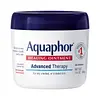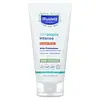What's inside
What's inside
 Benefits
Benefits

 Concerns
Concerns

 Ingredients Side-by-side
Ingredients Side-by-side

Water
Skin ConditioningCaprylic/Capric Triglyceride
MaskingCetearyl Alcohol
EmollientGlycerin
HumectantGlyceryl Stearate
EmollientHelianthus Annuus Seed Oil Unsaponifiables
EmollientSolanum Tuberosum Pulp Extract
SmoothingCoco-Glucoside
CleansingGlyceryl Caprylate
EmollientSodium Benzoate
MaskingSodium Gluconate
Skin ConditioningFurcellaria Lumbricalis Extract
Skin ConditioningPotassium Sorbate
PreservativeCitric Acid
BufferingPersea Gratissima Fruit Extract
EmollientWater, Caprylic/Capric Triglyceride, Cetearyl Alcohol, Glycerin, Glyceryl Stearate, Helianthus Annuus Seed Oil Unsaponifiables, Solanum Tuberosum Pulp Extract, Coco-Glucoside, Glyceryl Caprylate, Sodium Benzoate, Sodium Gluconate, Furcellaria Lumbricalis Extract, Potassium Sorbate, Citric Acid, Persea Gratissima Fruit Extract
 Reviews
Reviews

Ingredients Explained
These ingredients are found in both products.
Ingredients higher up in an ingredient list are typically present in a larger amount.
Glycerin is already naturally found in your skin. It helps moisturize and protect your skin.
A study from 2016 found glycerin to be more effective as a humectant than AHAs and hyaluronic acid.
As a humectant, it helps the skin stay hydrated by pulling moisture to your skin. The low molecular weight of glycerin allows it to pull moisture into the deeper layers of your skin.
Hydrated skin improves your skin barrier; Your skin barrier helps protect against irritants and bacteria.
Glycerin has also been found to have antimicrobial and antiviral properties. Due to these properties, glycerin is often used in wound and burn treatments.
In cosmetics, glycerin is usually derived from plants such as soybean or palm. However, it can also be sourced from animals, such as tallow or animal fat.
This ingredient is organic, colorless, odorless, and non-toxic.
Glycerin is the name for this ingredient in American English. British English uses Glycerol/Glycerine.
Learn more about Glycerin